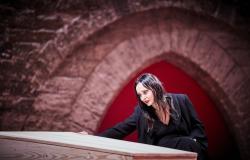Discover nature in a fun way by getting fully involved in your life. For a school class, head to the ATE in Vaux-sous-Aubigny!
Initiated by the National Forest Park and the OFB, the Educational Terrestrial Areas (ATE) are intended to be a tool for environmental education and sustainable development. The objective is to reconnect students with nature and the territory. Especially since within this youth are the citizens of tomorrow, and for some, ambassadors of the Park and its preserved ecosystem. A system to which the Vaux school and more precisely the CM1 class and its teacher Thomas Vérot have subscribed.
Between water and land
“This idea had appealed to us much earlier, but I wanted the students to be involved from the start, particularly to find the appropriate site. Four locations had initially been proposed by the municipality. After a visit and study, the students chose that of Echenaut where we began observation at the start of the school year”, specifies the teacher.
Discoveries and workshops in the forest. –
A particularly calm and bucolic place, just a few hundred meters from the school, and which offers a most interesting diversity. A Source that springs from the hill to supply an old washhouse, then flows randomly before joining the Badin watercourse.
A strategic site, on the hillside, bringing together a wooded area and a meadow, which students visit frequently, and for good reason! “After studying the configuration and especially identifying animal passages, we installed camera traps whose memory card must be changed regularly,” underlines Thomas Vérot.
Cultural component
A great initiative because in a few weeks the “hunting picture” is already proving interesting. A pine marten, an oak jay, a blackbird, a fox, a badger and a squirrel were “captured”, all in the same flow. Moved towards the damp plain, the camera quickly surprised another oak jay and a heron. Animals which are then studied at length in class, then classified in the form of cards. In addition, in order to better understand the people of nature, some ATE visits are accompanied.
Biodiversity and creativity
So, lately, it is with Aurélie Guy, from Sentier de la Welette, that the students have completed the course journey. His discerning eye made it possible to identify traces of foxes, deer, leftover meals of small predators, aquatic insects… A whole universe that fascinates and illuminates the eyes of children.
But an ATE is not only reserved for the study of biodiversity alone. Other speakers offer a different vision of nature. This was the case during the arrival of Clara Cornil who supervised the creation of small decorations based on plants and now adorning the surrounding trees, the making of small pottery placed at the birth of the water flows.
This ATE will continue until the end of the school year and will resume at the next school year. An observation which, over two years, will undoubtedly allow us to observe the evolution of nature… and its (small) inhabitants!






